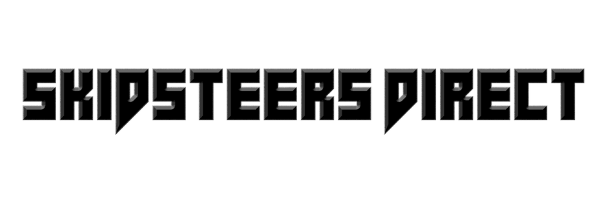
Best Wood Chipper Machines and How They Work - 2024
Share
Managing wood waste is an important aspect of many different industries. Whether it be forestry, highway management, general property management, landscaping, or other purposes, having a wood chipper machine is critical in managing tree maintenance and wood processing. Getting the right wood chipper for your needs is critical to getting the job done.
Wood chipper machines turn branches, limbs, and other tree parts into useful chips that can be used for a variety of different applications. Wood chips can be used for compost, fuel, mulch, and more.
Key Takeaways:
General Overview of Wood Chipper Operation
1. Feeding Mechanism
Branches and wood are fed into the chipper via the in-feed chute. The chute is designed to accommodate different sizes of material. Oftentimes, rollers or a feed system are integrated to pull material into the chipper.
2. Cutting Mechanism:
Within the chipper, there are sharp blades or knives that are mounted to a rotating disc or drum. These blades are designed to cut wood into small and uniform chips.
3. Discharge System
Once the wood is cut into chips, it is expelled from the unit via a discharge chute. The chute directs the chips away from the machine, typically into a pile, trailer, or collection container.
4. Power Source
Most wood chippers are powered by either an engine or a hydraulic system. The power source drives the rotating blades and the feeding mechanism.
|
Best Value
 |
BX72R Wood Chipper by Wallenstein |
|
|
Best Skid Steer Wood Chipper

|
Wallenstein BXH42 Skid Steer Chipper |
|
|
Best Trailer-Mounted Chipper

|
BXTR6438 Trailer Chipper by Wallenstein |
Types of Wood Chippers
There are 3 primary types of wood chipper machines - trailer-mounted, PTO-powered, and skid steer-mounted. Each of these has unique advantages and strengths and can be used in a variety of applications.
Trailer Mounted Wood Chippers
Benefits:
1. Versatility and Mobility: Trailer-mounted wood chippers are designed to be towed behind vehicles, typically trucks or tractors. These tow-behind models are very mobile and allow users to transport them from one job site to another.
2. High Capacity: Many trailer-mounted wood chippers are designed with higher capacity. They can typically handle larger volumes of material, which makes them ideal for both private and commercial use. The Wallenstein BXTR6438 has a 7” chipping capacity, which will help you handle the toughest of jobs.
3. Safety: Many wood chippers have safety features integrated directly into the machine. Several models have hydraulically powered top and bottom feed rollers which help grip and pull brush into the chipper. It also includes a safety control bar with forward/reverse controls to start and stop the chipper’s direction.
Hydraulic vs. Gravity-Fed Wood Chippers
Wallenstein’s wood chippers come in both gravity and hydraulically-fed options. There are advantages to both. Gravity-fed chippers tend to be more affordable, while hydraulically-fed options are more efficient.
PTO-Powered Wood Chippers
PTO Wood Chippers are powered by a tractor’s power take-off (PTO). Normal wood chippers either rely on an external engine while PTO chippers rely on the tractor’s engine to operate. They are great for agricultural settings and provide plenty of power.
Benefits:
- PTO-powered chippers are highly versatile. They can be used for maintaining farm and ranch properties along with clearing large wooded areas. Due to their ability to handle a wide range of wood sizes and types, they are ideal for heavy-duty projects.
- Cost Effective: PTO chippers are a great choice because they are generally less expensive than some stand-alone since they do not require their own engine.
Skid Steer Mounted Wood Chippers
Skid Steer mounted chippers are effective in many applications. They utilize the hydraulic flow from the skid steer to power the chipper attachment.
Benefits:
1. Maneuverability: Skid steer-mounted wood chippers are great attachments as they allow for easy maneuverability and can fit in tighter spaces than trailer-mounted versions. Another big advantage of a skid steer-mounted chipper is the ability to access terrain that wouldn’t normally be easily accessed by a trailer-mounted chipper.
2. Easy Operation: Skid steer-mounted wood chippers allow for quick attachment and operation. These chippers operate using the hydraulics from the skid steer, so no external engine is needed. which means you can switch between tasks rapidly. Another advantage is the ability to switch between different attachments quickly. Another benefit is the adjustable discharge chute, which allows the operator to safely point discharge to a safe area. Many models also have an integrated twig breaker which aids in breaking material into smaller pieces to make a more uniform mulch.
3. Powerful Performance: The smaller, skid steer-mounted wood chippers can be quite powerful. By leveraging the hydraulic power directly from the skid steer, they are robust and efficient. Many skid steer-mounted chippers can handle up to 4” material.
4. Cost-Effective: Skid Steer chippers are often times more affordable than their trailer-mounted counterparts. Another benefit is that many chippers come with reversible rotor knives, which double the longevity of your knives.
Finance your Skid Steer Wood Chipper Today!
If you're interested in a wood chipper, order it now and start making payments after you receive it! We are partnered with CIT Bank to offer our customers business financing solutions. You can apply here or call us today. Many customers are instantly approved.

